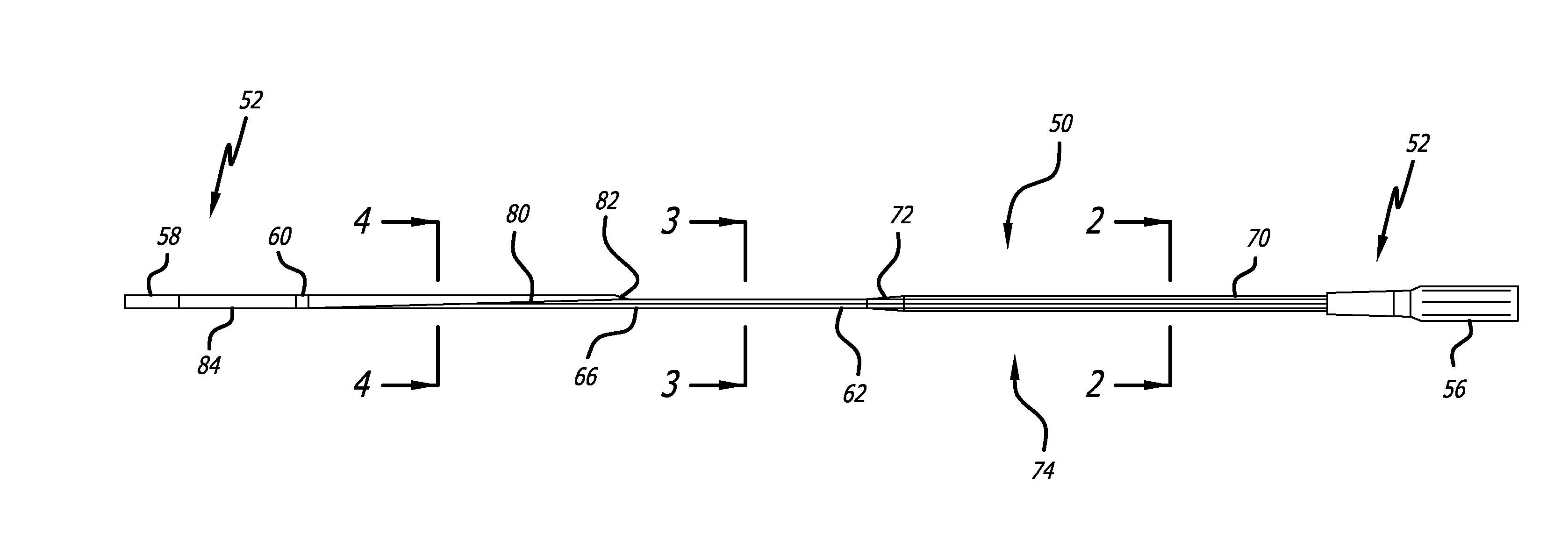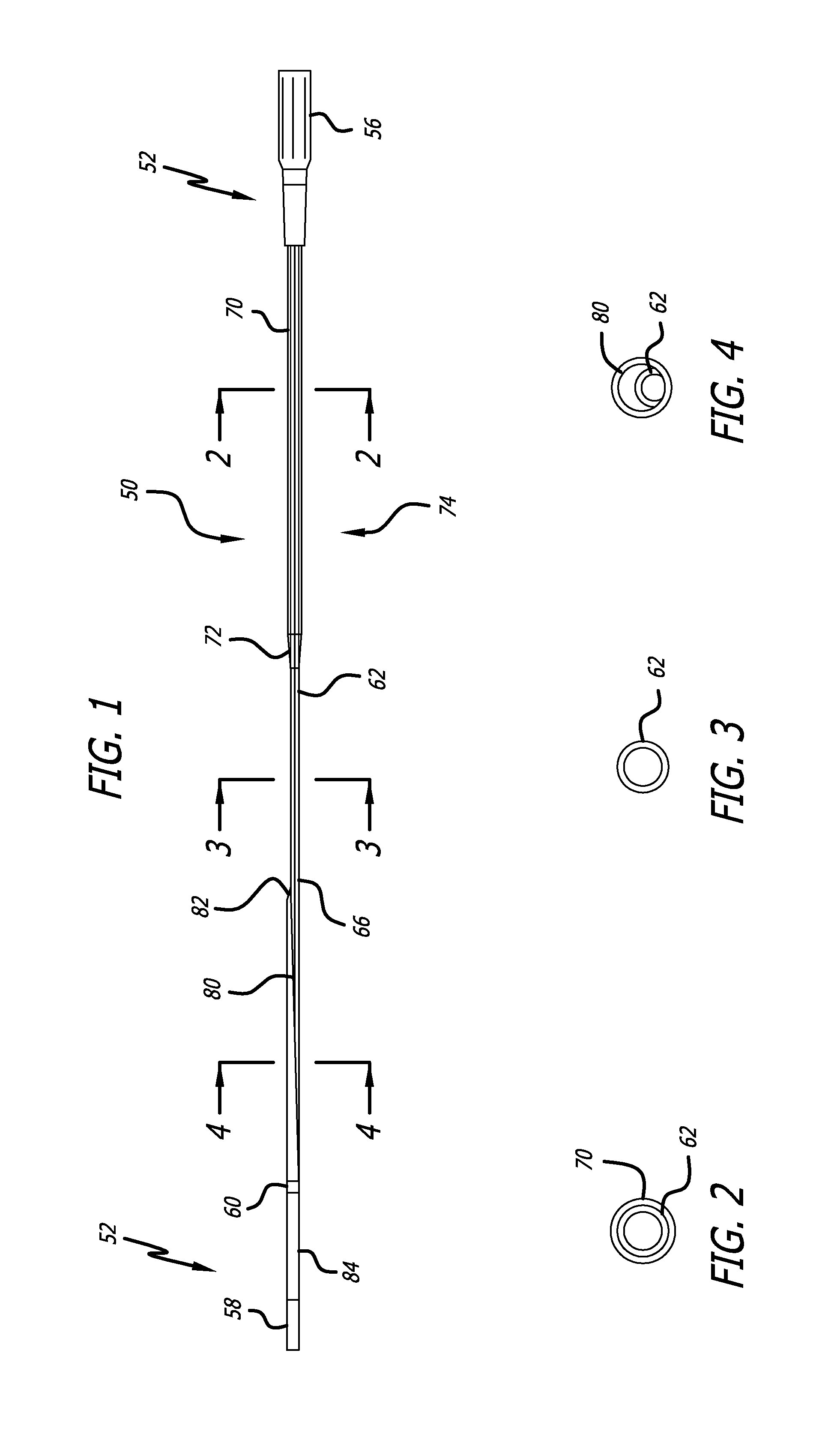Recovery catheter apparatus and method
a catheter and catheter tip technology, applied in the field of recovery catheters, can solve the problems of not fully vaporizing and thus entering the bloodstream, affecting affecting the patient's health, so as to facilitate the proper positioning of medical devices, facilitate the use of medical devices, and flexible tip
- Summary
- Abstract
- Description
- Claims
- Application Information
AI Technical Summary
Benefits of technology
Problems solved by technology
Method used
Image
Examples
Embodiment Construction
[0037] Referring to the drawings, which are provided for example and not by way of limitation, there is shown a recovery catheter for use with a filter or embolic protection device. The recovery catheter of the present invention embodies structural characteristics specifically designed to facilitate advancement through narrow and / or tortuous vasculature. Moreover, the recovery catheter includes a superior end portion configured to provide an effective receptacle for a filter or other medical device and to minimize interference with other components in vasculature.
[0038] With reference to FIGS. 1-4, there is shown one embodiment of a recovery catheter 50 of the present invention. The recovery catheter 50 is elongate having a length sufficient to extend from outside a patient's body to an interventional site within the patient. The recovery catheter 50 is generally tubular in shape and includes a proximal or inferior end portion 52 and a distal or superior end portion 54. The proxima...
PUM
| Property | Measurement | Unit |
|---|---|---|
| length | aaaaa | aaaaa |
| length | aaaaa | aaaaa |
| wall thickness | aaaaa | aaaaa |
Abstract
Description
Claims
Application Information
 Login to View More
Login to View More - R&D
- Intellectual Property
- Life Sciences
- Materials
- Tech Scout
- Unparalleled Data Quality
- Higher Quality Content
- 60% Fewer Hallucinations
Browse by: Latest US Patents, China's latest patents, Technical Efficacy Thesaurus, Application Domain, Technology Topic, Popular Technical Reports.
© 2025 PatSnap. All rights reserved.Legal|Privacy policy|Modern Slavery Act Transparency Statement|Sitemap|About US| Contact US: help@patsnap.com



